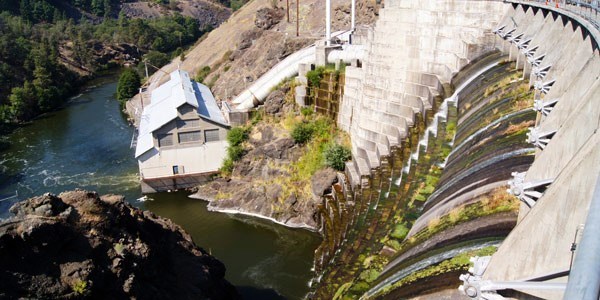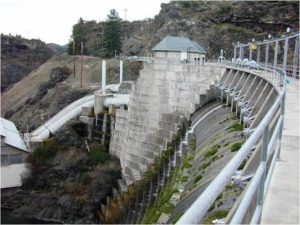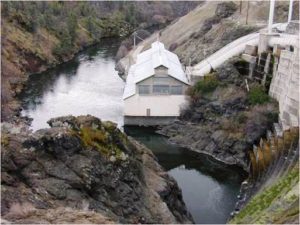Four Klamath River dams in California and oregon have been slated for future removal in 2020 after an agreement was signed in 2016 between state and federal officials, the National Marine Fisheries Service, the dam’s Oregon-based owner PacifiCorp, several tribes who reside in the Klamath Basin, and other stakeholders.
This would transfer and surrender PacifiCorp’s hydropower license to the Klamath River Renewal Corporation who are heading dam decommissioning and removal efforts.
Recently, Alan Mikkelson, the Interior Department’s Bureau of Reclamation Deputy Commissioner, revealed that the federal government will not be opposing the dam removal. Many dam removal advocates were concerned that the Trump administration would undermine the 2016 agreement.
“Interior is not going to do anything to slow or stop the dam removal process,” explained Mikkelson in media interviews. He toured the Klamath-Trinity Basin this year, meeting with basin stakeholders including representatives of the Hoopa Valley Tribe who reside along the Trinity River, a tributary to the Klamath River.
Hoopa Valley Tribe Chairman Ryan Jackson said “We’ve had a number of meetings with Alan. They have all been pretty positive. Alan has brought a sort of new perspective to the Klamath-Trinity basin, which is definitely positive.”
This has been a long-running issue. Previous agreements before the one approved last year were repeatedly rejected by Congress.
The successful deal, called the Klamath Hydroelectric Settlement Agreement, was then modified in a way that it would not require congressional approval nor the direct involvement of federal agencies. This involved the Obama administration, California and Oregon state officials, PacifiCorp, tribal governments, and fishing groups.
The fate of the dams—JC Boyle, Copco No. 1, Copco No. 2, and Iron Gate—now rests with the Federal Energy Regulatory Commission (FERC), the agency responsible for hydropower projects in the U.S. They have an unfortunately-atrocious environmental record, but might not be able to obstruct the momentum to remove these dams and restore the health of the Klamath River.
The Klamath River was once the third largest producer of salmon on the West Coast, behind Columbia and Sacramento rivers. This year, Chinook salmon return to the lower Klamath were dismally low. The removal of the dams will open up over 420 miles of connected habitat for fish on the Klamath River. Hopefuily, we can soon look forward to a return to its historic abundance.
Featured image is the Copco 1 Dam. Photo by Sustainable Northwest.
California Trout (CalTrout) is one of many organizations who have been fighting for decades to removed these dams. Concerned about deteriorating fishing conditions throughout the state, a passionate group of anglers founded California Trout in 1971. CalTrout was the nation’s first statewide conservation group supported by trout and steelhead fishermen. They had a simple mission: to protect and restore wild trout and steelhead waters throughout California. By 1972, the organization had acquired a few hundred members and delivered two landmark victories: The California Wild Trout Program and The California Wild and Scenic Rivers Act.
This program was established in partnership with the California Fish and Game Commission (now the California Department of Fish and Wildlife) to protect and enhance quality trout fisheries sustained by natural reproduction. The Program now protects and restores over 1,000 miles of wild trout streams.



